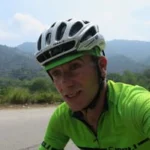Eating unhealthy food and smoking on the couch is more of a risk than cycling on an icy road in winter, or?
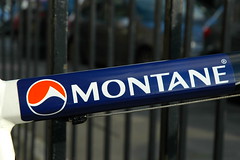 As I recently did an interview for Montane’s website, I thought I give a you a short look into some of the questions and answers. Montane has been an incredible supporter on the recent trips, supplying me with some kit for extreme conditions, and I can highly recommend looking into their product range if you want reasonable priced, well-functioning and great looking outdoor gear, designed in Britain and ready for its weather conditions. Check out the gear I used for my winter trip and the latest one in May. My favourites are their cycling jackets and gilets, which are incredibly light, breathable and still windproof (Featherlite Velo Jacket and Slipstream Gilet) and waterproof (Velocity DT & Featherlite Velo H2O Jacket). Thanks to Paul and Jo at Montane, who have been a great support, and I am quite stoked to be featured on their website alongside Julian Monroe Fisher, Stephen Pyke and others. Here are some questions and answers from the interview, the whole thing can be found on Montane’s website here.
As I recently did an interview for Montane’s website, I thought I give a you a short look into some of the questions and answers. Montane has been an incredible supporter on the recent trips, supplying me with some kit for extreme conditions, and I can highly recommend looking into their product range if you want reasonable priced, well-functioning and great looking outdoor gear, designed in Britain and ready for its weather conditions. Check out the gear I used for my winter trip and the latest one in May. My favourites are their cycling jackets and gilets, which are incredibly light, breathable and still windproof (Featherlite Velo Jacket and Slipstream Gilet) and waterproof (Velocity DT & Featherlite Velo H2O Jacket). Thanks to Paul and Jo at Montane, who have been a great support, and I am quite stoked to be featured on their website alongside Julian Monroe Fisher, Stephen Pyke and others. Here are some questions and answers from the interview, the whole thing can be found on Montane’s website here.
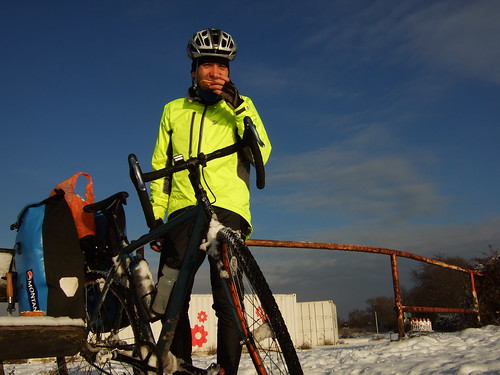 You cycled on a singlespeed bike in the middle of winter from Edinburgh to Erfurt in Germany, in conditions that forced authorities to close airports, stopped trains from running and made it difficult even to walk. Where did that confidence come from to cycle in those circumstances and how did you manage to convince yourself each day to get back on the bike?
You cycled on a singlespeed bike in the middle of winter from Edinburgh to Erfurt in Germany, in conditions that forced authorities to close airports, stopped trains from running and made it difficult even to walk. Where did that confidence come from to cycle in those circumstances and how did you manage to convince yourself each day to get back on the bike?
I was pretty aware that this was going to be a huge challenge to cycle in those conditions. But in the end I was making my way through very civilised terrain. I have read about people cycling though Siberia in winter, so my trip after all was a piece of cake compared to theirs. Having done extensive cycle-touring beforehand I was confident that neither the distances nor the conditions were too difficult to cycle in, I think I had worse things to negotiate so far. I remember that on a trip in New Zealand we had to wade through an ice-cold river, only to continue cycling afterwards, with no civilisation at all in sight for the next 100km. Back in the days I was glad when my feet finally thawed after hours, cycling a day without feeling your toes isn’t the most comfortable of feelings. The most important thing though was trying winter cycling with my friend Ian in the end of November, when Scotland pretty much came to a still-stand. We only did 40km that day but cycled through some of the worst road conditions I have ever seen, and survived. We even had loads of fun. Overtaking cars on hills on a singlespeed bike is somehow pleasing, even the police admired us for that. With that in mind I was always keen on finishing the trip, and stayed on the bike even as the conditions got much worse than I could have planned for. There was on room for errors though, as I had to be home for Christmas, no one day later. I didn’t want to compromise seeing my family with my ambitious cycling efforts, I wanted to combine the two. With that in mind I had a very good reason to cycle every day, and in the end made it home.
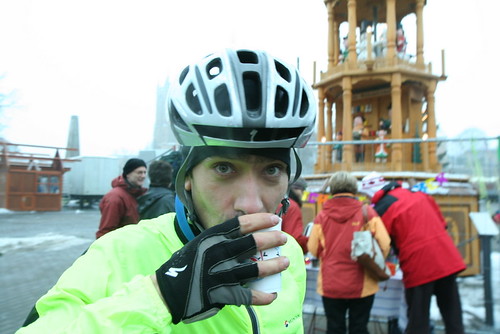 What about risk? Isn’t cycling on icy roads a bit too risky, especially when you are going through some of the most populated areas like the Ruhrpott in Germany?
What about risk? Isn’t cycling on icy roads a bit too risky, especially when you are going through some of the most populated areas like the Ruhrpott in Germany?
Possibly yes. But eating unhealthy food and smoking on the couch is more of a risk than cycling on an icy road in winter, or? It is always a matter of perspective, and I had people calling me a nutter, even though it only happened very occasionally. Risk is something which, to a certain extent, is controllable, and I did my best to be prepared. I am a keen mountain biker, and therefore my balance is possibly much better than an average person’s balance. Exactly that saved me from falling in a few tricky situations, for example when I was chased over a snowed in road by a huge dog. Controlling the risk meant staying away from main roads as much as I could, car drivers can get very impatient when they have to wait a few minutes to overtake you, especially in winter. With most of the cycle paths closed due to knee-deep snow, I sometimes dreamt of how easy it would be to do the same in summer, but then everybody can do it.
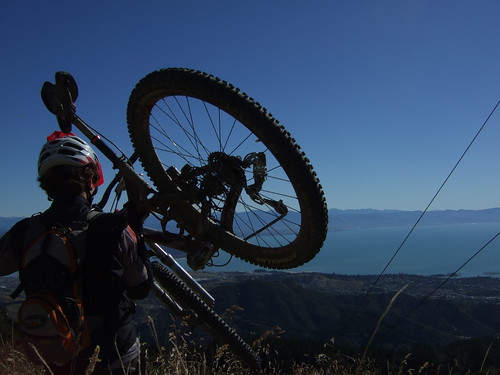 Who would you say has inspired you to push your limits and cycle further and faster?
Who would you say has inspired you to push your limits and cycle further and faster?
There are few names I can think of, one of them is Graeme Obree. His famous quote ‘You know something is not impossible once you’ve done it – so what’s stopping you?’ has been lingering around in my head ever since I watched The Flying Scotsman on my flight to Wellington in November 2006. Moving to New Zealand gave me so much inspiration and an appetite for the outdoors, and it was there that I met Mark Inglis, who was the first man to climb Mount Everest without his own legs. I was fascinated how determined one could be, and how much will power he had, still being an interesting man to speak to as well, pretty normal really. In terms of cycling I was inspired by Alastair Humphreys‘ two books about his 4.5year trip around the world on a tiny budget.
The inspiration for most of my trips comes from people I talk to, mostly locals that know the hidden gems in their own countries. I am trying my hardest at photography, and most of my trips are indeed inspired by the chance of visiting unspoilt places, that’s why I hate being stuck in towns. And as I get fitter and faster, I can simply make most of my days, and explore more. And possibly inspire other people, I like the idea of that.
Read more at www.montane.co.uk
